EDINBURG — The voices of children reverberated against the historic walls of Old Hidalgo County Jail at the Museum of South Texas (MOST) History Friday morning — excited voices and giggles with hushed shushes crescendos as the class of fourth graders made their way up the stairway to the second floor where Chief Executive Officer Francisco Guajardo waited.
When the group of nearly two dozen students, most wearing blue T-shirts, made their way into the Cell Block Gallery, Guajardo greeted them enthusiastically, matching their energy as they gathered around him.
“Do you want me to tell you a story?” Guajardo asked. “Yes,” the children responded in unison.
“OK, what school are you from?” he asked. “Jackson Elementary,” they responded.
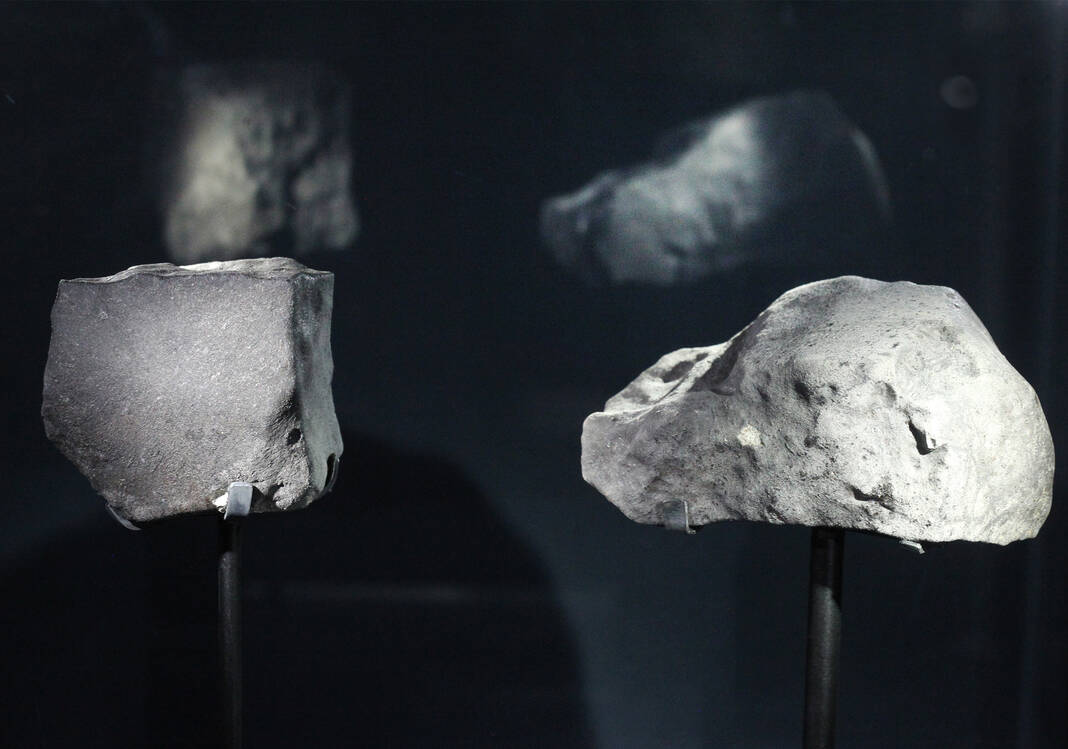 The Starr County meteorites on display at the Museum of South Texas Wednesday Oct.16 2024 in Edinburg. (Delcia Lopez | dlopez@themonitor.com)
The Starr County meteorites on display at the Museum of South Texas Wednesday Oct.16 2024 in Edinburg. (Delcia Lopez | dlopez@themonitor.com)“He’s very interesting. You should study Andrew Jackson, but I’m not going to say anything about Andrew Jackson today,” Guajardo said.
He took a moment to quiz them on the namesake of their school before pivoting to the star of the exhibit.
“One year and a half ago, February of 2023, a ser con un año y medio,” Guajardo said, switching between English and Spanish. “Venía de los cielos. It came from space, a huge thing called an asteroid. Can you say asteroid?”
He explained to the children how a rock from the furthest reaches of space traveled for billions of miles before entering Earth’s atmosphere and breaking apart before making landfall on a ranch in Starr County.
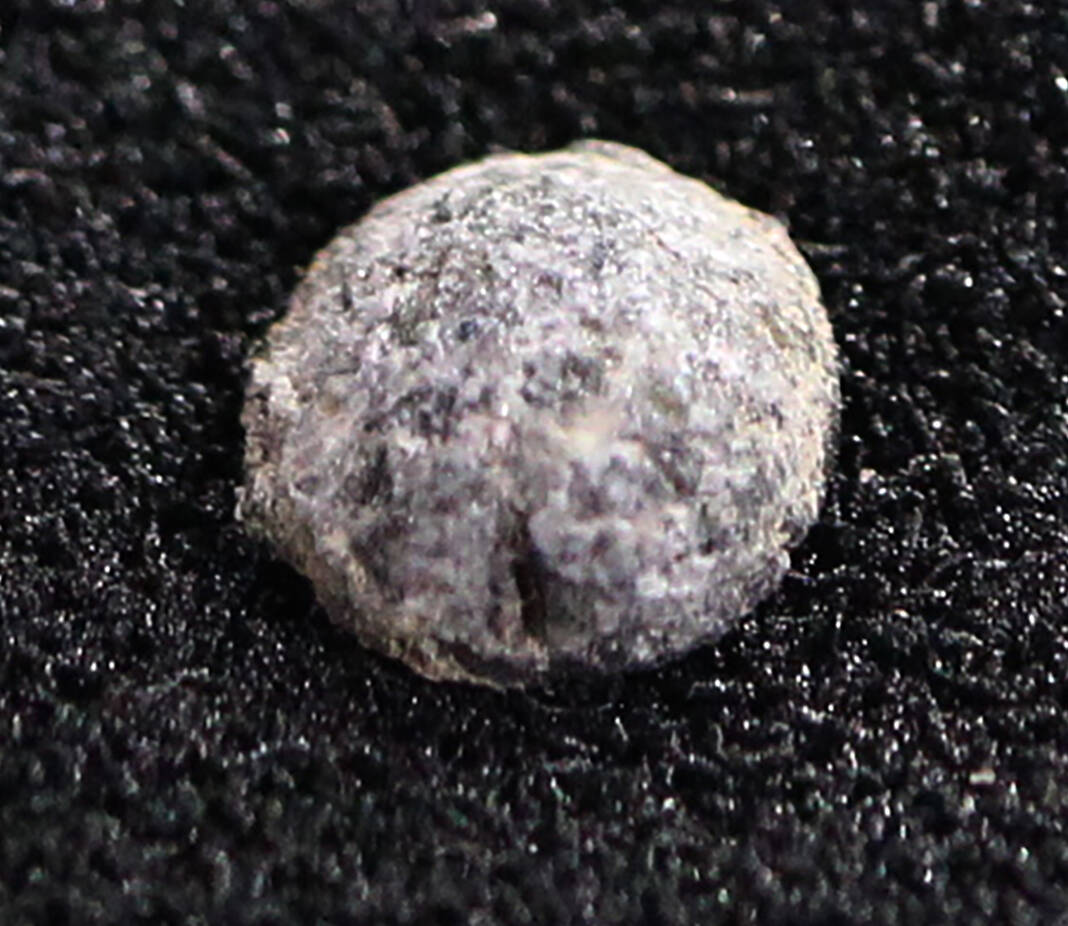 A chondrite is part of the stony meteorite specimens found near El Suaz in Starr County that are seen on display at the Museum of South Texas Wednesday, Oct. 16, 2024 in Edinburg. (Delcia Lopez | dlopez@themonitor.com)
A chondrite is part of the stony meteorite specimens found near El Suaz in Starr County that are seen on display at the Museum of South Texas Wednesday, Oct. 16, 2024 in Edinburg. (Delcia Lopez | dlopez@themonitor.com)With the children fully engaged, he led the group to a dimly-lit area of the room where six of the over 40 fragments are now on display behind protective glass. The gray, porous rocks give off a slight glimmer as light reflects off of the cosmic specimens.
The exhibit, called “The Shooting Star of Starr County,” opened on Sep. 19, telling the story of the day the meteor flew across South Texas skies on Feb. 15, 2023.
The walls of the Cell Block Gallery were covered with photo displays telling the story of the space rocks and how they traveled through space to the Rio Grande Valley.
“It landed in a ranch, in a private ranch right outside of El Sauz, which is a community north of Rio Grande City,” Guajardo said. “So that meteorite that landed was part of a meteorite shower. Essentially, it was a strew of meteorites that landed on a ranch and on the 15th of February of 2023.”
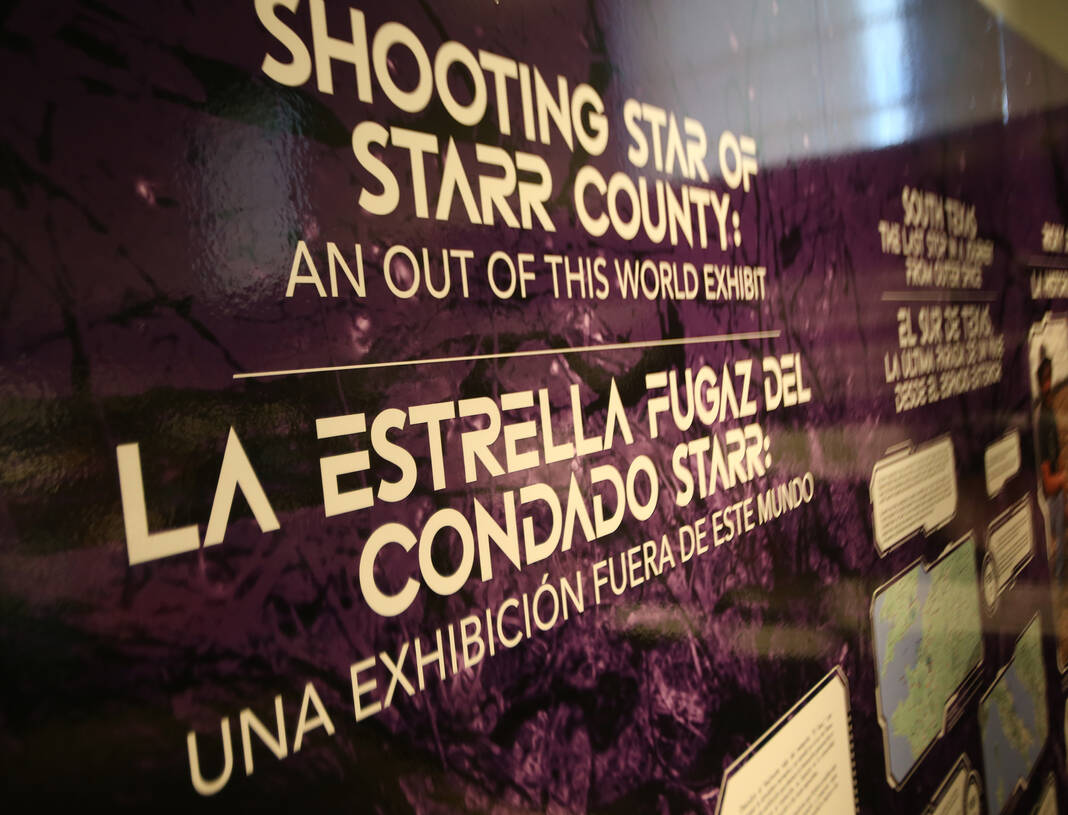 The display for the meteorites that were found in Starr County are seen on Wednesday, Oct. 16, 2024 in Edinburg. (Delcia Lopez | dlopez@themonitor.com)
The display for the meteorites that were found in Starr County are seen on Wednesday, Oct. 16, 2024 in Edinburg. (Delcia Lopez | dlopez@themonitor.com)The rocks were part of a cluster of meteoroids that initially made landfall on Feb. 13 in France, then on Feb. 14 in Italy, and finally on El Sauz on Feb. 15.
“So it was about a 1,000 pound rock that was barreling down toward South Texas, and when it landed, it landed like in smaller rocks because it’s coming apart,” Guajardo said. “There was this one rock that was probably the size of a basketball that hit a mesquite tree, and the mesquite won.”
Some of the splintered branches that were struck by the meteor are also in a glass display with pieces of the shattered rock. Upon closer inspection, tiny shards of the rock can be seen embedded in the mesquite branches.
“A meteorite fragment was found impaled in a mesquite tree branch, and so the mesquite shattered the meteorite,” Guajardo said. “Meteorites hit buildings and they pierce through buildings. Meteorites hit cars and they pierce through cars. Meteorites will hit the street, like a concrete or asphalt street, and it’ll puncture it. This meteorite hit a mesquite tree, and it shattered.”
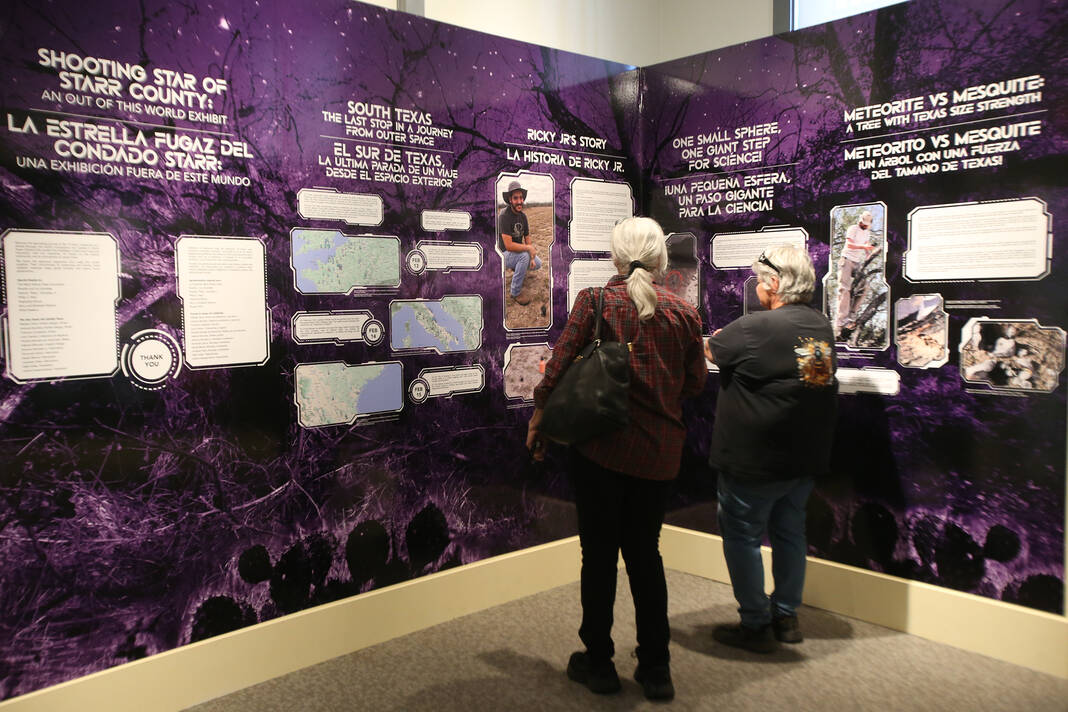 Visitors check out the display with documentation for the meteorites that were found in Starr County last year on Wednesday, Oct. 16, 2024 in Edinburg. (Delcia Lopez | dlopez@themonitor.com)
Visitors check out the display with documentation for the meteorites that were found in Starr County last year on Wednesday, Oct. 16, 2024 in Edinburg. (Delcia Lopez | dlopez@themonitor.com)Soon after news spread about the South Texas meteorite, a search ensued on the Starr County ranch for the space rocks. The story of the search is told on the walls of the museum from the perspective of Ricky Gonzalez, Jr., who lives on the ranch with his parents.
“Three days later, my dad let a few people onto the ranch,” Gonzalez narrated. “These were people that Phil (Mani) recruited that became known as the NASA Team. They were Dr. Marc Fries from NASA and his wife Dr. Linda Fries from Rice University. And there was also Robert Ward, who they called the Space Cowboy.”
By noon that same day, Ward had discovered the first meteorite. A second was discovered the following day by Marc Fries, and a third was found by Gonzalez.
Many of the rock specimens were sent to labs to be studied. Guajardo said that the museum was able to acquire some of the rocks on loan for one year through a trustee who is close to the owners of the ranch.
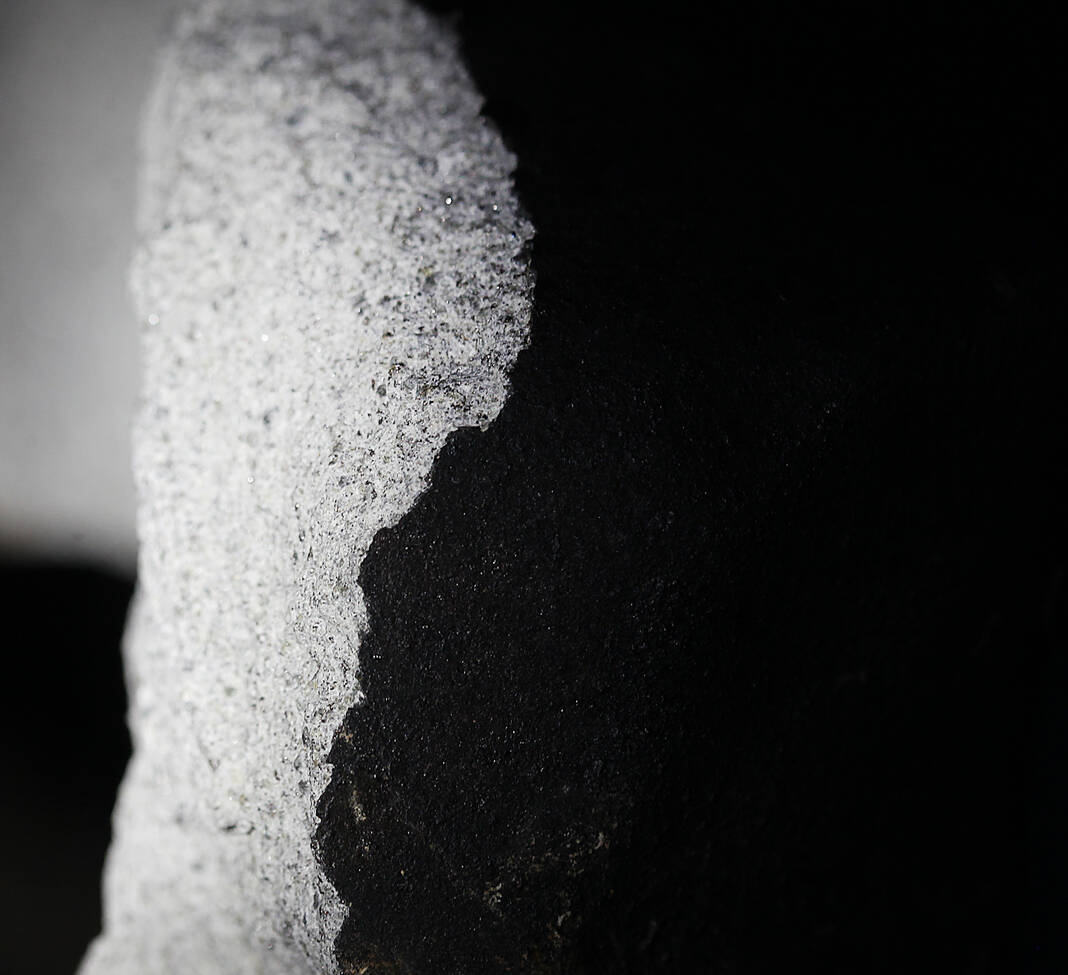 On Feb. 15, 2023, meteorites landed on the El Sauz ranch in Starr County. They are seen on display at MOST History on Wednesday, Oct. 16, 2024 in Edinburg. (Delcia Lopez | dlopez@themonitor.com)
On Feb. 15, 2023, meteorites landed on the El Sauz ranch in Starr County. They are seen on display at MOST History on Wednesday, Oct. 16, 2024 in Edinburg. (Delcia Lopez | dlopez@themonitor.com)The museum confirmed the acquisition of the rocks in January. They then had to move quickly to prepare the exhibit. They were able to secure a $25,000 grant to support the creation of the exhibit, which ended up totaling approximately $50,000.
Guajardo’s team was able to create the exhibit in close to six months, a process that he said normally takes over a year, with a custom light display mimicking a starry night sky with streaks of shooting stars dashing across the exhibits ceiling every few seconds.
“There are a number of things that I want people to take from this,” Guajardo said. “Number one, that South Texas, like any other place, is the center of the universe. This is a place where things happen. This is a place where when things happen, if we document them and tell a story in good, disciplined ways, that we learn so much about ourselves and about where we are in the world.”
The meteorites will be on display at the museum until August 2025. For more information about the exhibition, visit mosthistory.org.
The post Starr County meteorites on display at MOST History in Edinburg appeared first on MyRGV.com.
 (2).png)
 2 hours ago
14
2 hours ago
14


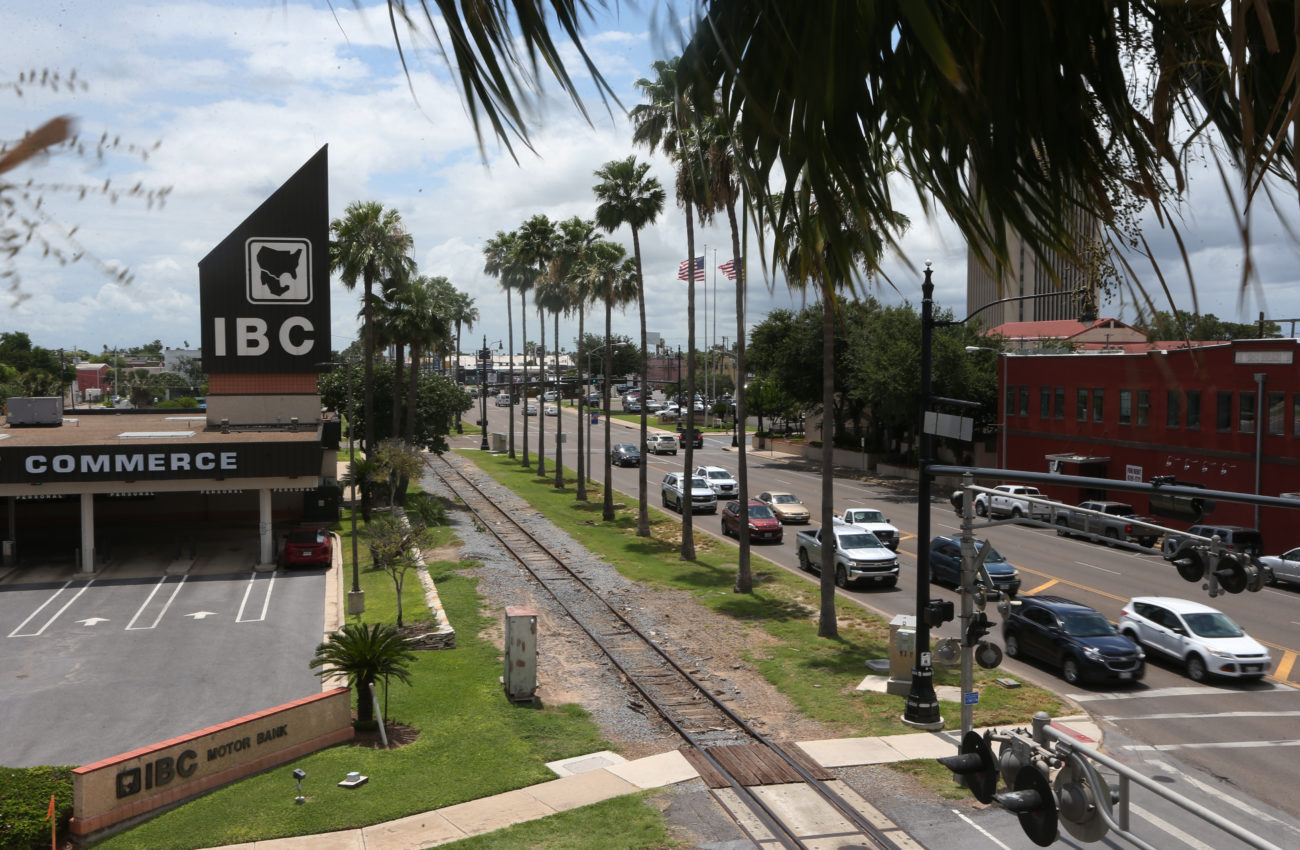





 English (US)
English (US)